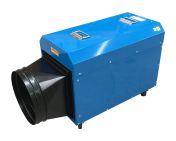Fan Heaters
Compare Product Details |
|---|
Each £37.29(exc. VAT) |
Each £15.69(exc. VAT) |
Each £99.10(exc. VAT) |
Each £203.72(exc. VAT) |
Each £107.17(exc. VAT) |
Each £139.25(exc. VAT) |
Each (In a Pack of 92) £15.195(exc. VAT) |
Each £45.06(exc. VAT) |
Each £310.39(exc. VAT) |
1 Box of 1 £927.44(exc. VAT) |
Each £48.83(exc. VAT) |
1 Box of 1 £203.00(exc. VAT) |
Each £142.57(exc. VAT) |
1 Box of 1 £201.24(exc. VAT) |
1 Box of 1 £441.51(exc. VAT) |
Each £116.28(exc. VAT) |
1 Box of 1 £339.17(exc. VAT) |
Each £37.11(exc. VAT) |
Each £251.43(exc. VAT) |
Related links
- Soler&Palau, PIR Controller Space Heater PIR Controller for use with Space Heaters
- Water Heaters
- Enclosure Heaters
- Atlantic 2000W Space Heater, Horizontal
- United Automation, PIR Controller Space Heater PIR Controller for use with IR Heaters
- Infrared Heaters
- Atlantic 1000W Space Heater, Horizontal
- SIP 1.5kW Infrared Heater BS1363
Be the first to know about our latest products and services
Join our mailing list today:
The personal information you provide to us when signing up to the mailing list will be processed in line with our privacy policy.



















